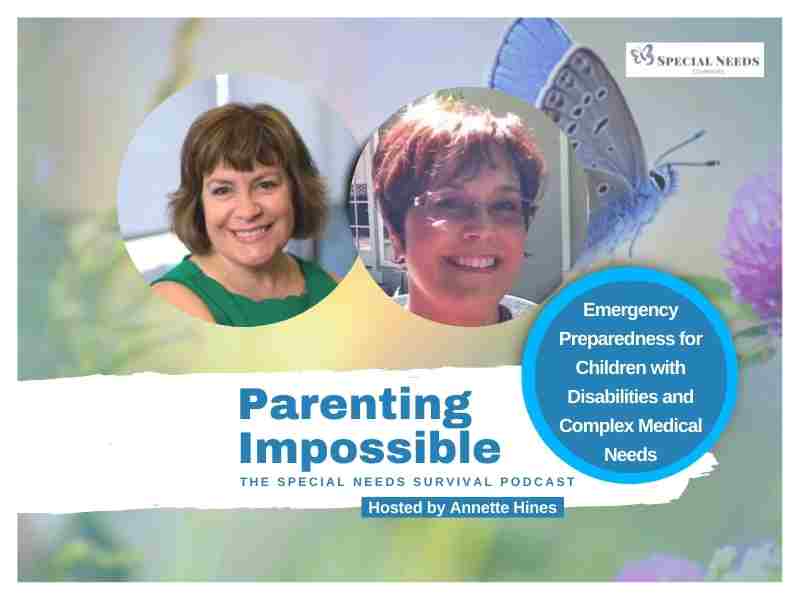When your family is faced with natural disasters or emergency situations, how do you cope? For families with children with disabilities or complex medical needs, what types of plans do you have in place to protect their access to medicines, devices or equipment, food and more? As we are currently in hurricane season and only a week out from Hurricane Fiona’s devastation on Puerto Rico and Hurricane Ian nearing landfall on Florida’s Gulf Coast, Host Annette Hines’ interview on disaster and emergency responsiveness is timely. Her guest, Patricia Frost is Vice-Chair of the National Pediatric Disaster Coalition (PDC) and a Pediatric Disasterologist with over 35 years experience as a pediatric/neonatal critical care nurse, nurse educator, and nurse practitioner. A previous podcast guest, Alex Ghenis, the deputy director of Sustain Our Abilities (SOA) explained the impact of climate change and disasters on a person with disabilities in the episode “Climate Change and Disaster Preparedness in the Disability Community.” As a wheelchair user, Ghenis personally experiences the impact of brownouts or complete power outages that mean he is unable to charge his wheelchair. For many others with disabilities who are dependent on electricity for receiving food or medications like Hines’ daughter Elizabeth was, the loss of electricity, even temporarily, is life-threatening.
Key takeaways from both episodes and especially for emergency preparedness for children are that planning is paramount, which includes using checklists and developing a community of supporters who are ready to jump in when disasters strike. For Hines, this meant connecting with the local fire station which they designated as the local emergency evacuation site for their family. Because the fire station would still have electricity if the power went out and medics on hand, it was a key support for Hines’ daughter Elizabeth who was receiving life-sustaining treatments that required electrical power such as her feeding tube, oxygen, suctioning, the monitor systems of her health and functioning, and more. Hines recommends that families not only have a home emergency plan, but also an emergency plan for school. An Individualized Health Plan (IHP) for school that can be part of the IEP (Individualized Education Plan). So if your child has any healthcare needs that should be addressed at school, the IHP can document those and may or may not be part of the IEP.
In this discussion, Frost and Hines uncover the uncomfortable reality that the United States still has a lot of work to do in terms of disaster and emergency preparedness for children. Despite all of the recurring natural disasters in our country, Hines asks, why is it now that we’re really starting to wake up and say: We really have to pay attention to this? Frost notes that groups like PDC that have been working on disaster preparedness for children since 2008 have really been faced with frustrating roadblocks to progress. The convergence of elements like 1) the Covid pandemic that forced the closing of schools, which provide essentials services to children with disabilities, encouraged new funding and attention on the issue as well as 2) new research that shows the evidence that children are missing from disaster preparedness, especially those with complex needs. Plus, just recently, the Department of Homeland Security gave FEMA a mandate to include children in all of their planning.
So what can you do as a family to prepare your kids for an emergency? Small bites, prepare in pieces. Check out the National Pediatric Disaster Coalition (PDC)’s website for ideas: https://www.npdcoalition.org/
National Pediatric Disaster Coalition group on LinkedIn is an advocacy group dedicated to the development of programs and activities that will provide the best outcome for children and families in disasters.

